Gottfried Mind (1768–1814) was an autistic Swiss painter, known for his intricately detailed drawings and paintings of cats.
Raphael of Cats
A savant, Mind was nicknamed the “Cat Raphael” (Katzen-Raphael in German) by Madame Vigee Lebrun, a contemporary French portrait painter in homage not only to his artistic feline painting skills but also in recognition of “the life and spirit that he transfused into” his drawings of cats.
In 1914, Dr. Alfred F. Tredgold, a British neurologist who specialized in intellectual abilities noted:
“Occasionally the talent for drawing passes beyond mere picture-copying, and shows the presence of a real artistic capacity of no mean order. This was the case with the celebrated Gottfried Mind, who had such a marvellous faculty for drawing pictures of cats that he was known as ‘The Cats’ Raphael’.” (Tredgold, 1914, p. 304).
Gottfried’s had both physical and mental disabilities for which he was taunted. While he was described as being unable to read or write or understand money, Gottfried’s drawing abilities were evident from a young age.
After attending a school for impoverished children, Mind eventually came under the tutelage of Swiss painter, Sigmund Freudenberger.
As recounted by Ross (1868), Mind critically eyed Freudenberger’s painting, “Peasant Clearing Wood” that he was working on at the time. In this drawing, a mother sits with her infant while a cat peers into a basket at her feet. Seeing Mind staring at the cat in the drawing, the artist challenged his pupil to draw a better one. Freudenberger liked the drawing that Mind came up with so much, he copied it into the painting.
After Freudenberger’s death, Mind devoted himself to drawing cats and other animals.
An obituary in Time’s Telescope, an almanac published in 1820 described Mind:
“When he was at work, a favourite cat generally sat by his side; and he was often seen employed at this table with an old cat on his lap, and two or three kittens on both shoulders, or even in the hollow formed at the back of his neck by the inclination of his head. Thus encumbered, he would site for hours together at his work, and obtain from every motion that could in the least incommode his beloved favourites.”
His ability to draw lifelike animal features earned him widespread fame in Europe. Mind even reportedly sold a painting of a cat and kittens to King George IV.
Mind spent most of his life indoors as a result of his poor health and died at the age of 46. He was buried in Bern, Switzerland and his tombstone inscribed in Latin:
Lugete ofeles ursique lugete
Mortuus est vobis amicus.
(Mourn, all ye cats ! Ye bears in sorrow bend,
For death has robbed you of your dearest friend)
Mind’s work on cats was featured posthumously in a popular cat book by French novelist and critic Jules François Felix Fleury-Husson (who wrote under the pseudonym Champfluery). Published in 1869, Les Chats, histoire, moeurs, observations, anecdotes, the book featured a series of cat essays along with drawings and portraits from prominent contemporary artists.
The book featured two drawings by Gottfried Mind. The first, featured on the frontispiece, is a watercolor drawing of a cat grooming its rear:
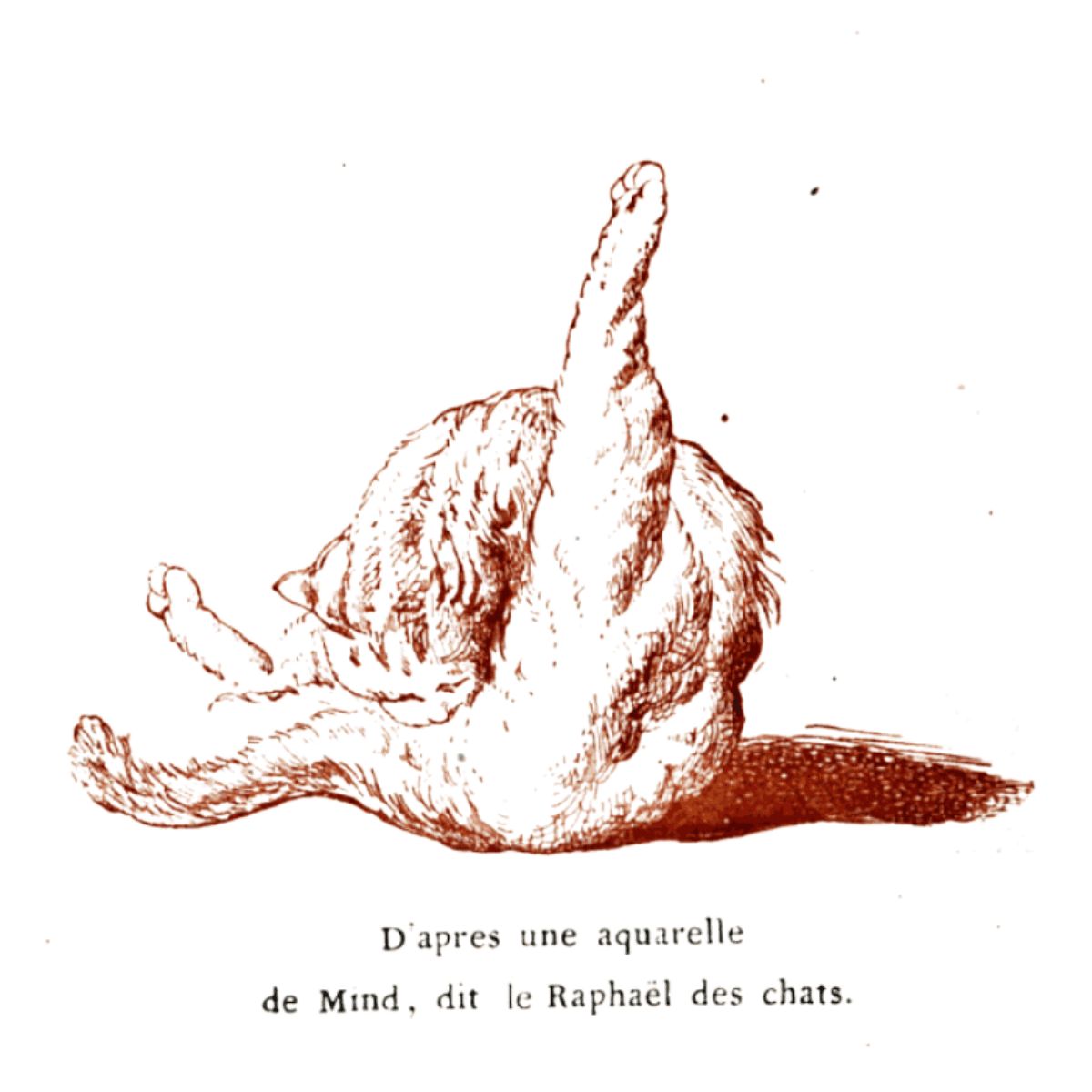
Page 142 of the book also featured a simply line drawing of another cat grooming itself.
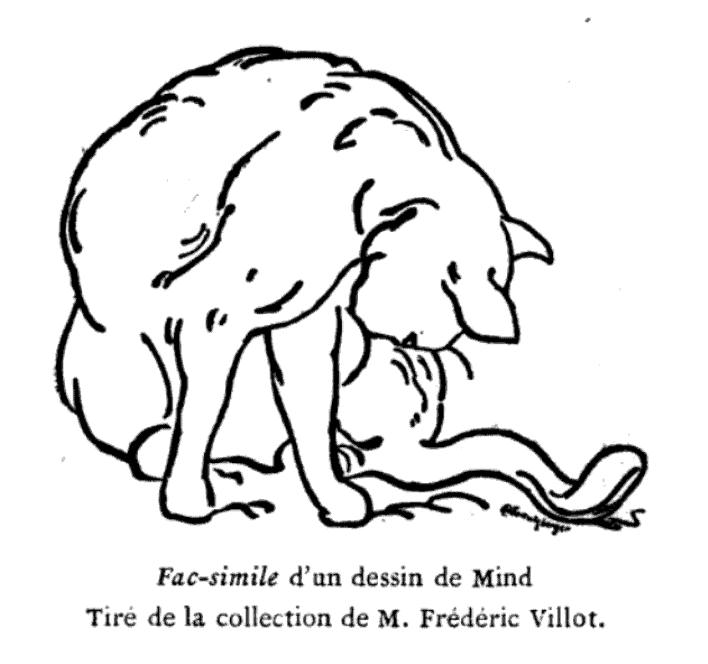
Lithographs of Gottfried Mind’s Cats
Joseph Brodtmann (1787-1862) was Swiss artist known for his lithographic prints of animals.
Sometime between 1820 and 1860, Brodtmann published a series of Mind’s cat drawings as lithographs. Lithographic prints are a type of printing process that involves creating an image on a flat stone or metal plate, which is then transferred onto paper or another medium.
The series are pen and ink drawings of cats doing variety of typical cat scenes.
Mother cat with newborn kittens
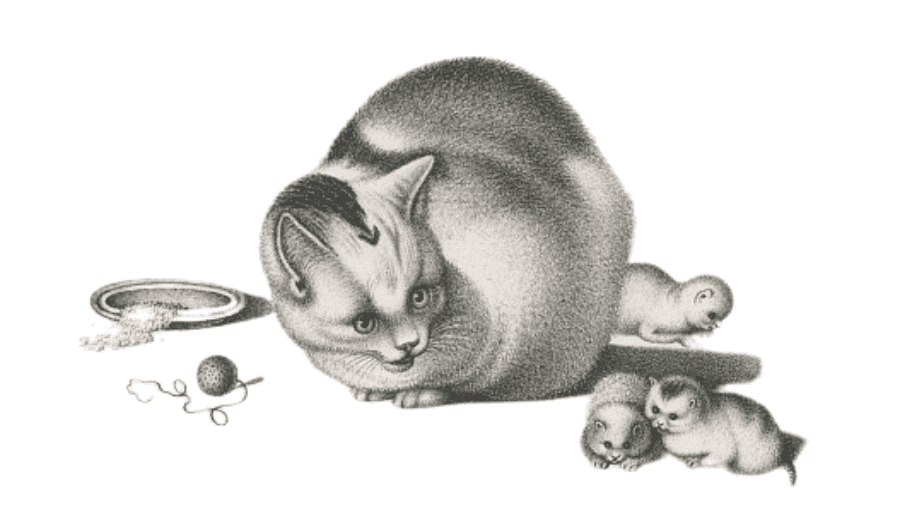
Cat and kittens playing
The next series of drawings shows the same mother cat with older kittens.
In this drawing, a mother cat stands watch while her kittens are rolling around and playing with some small balls of string.
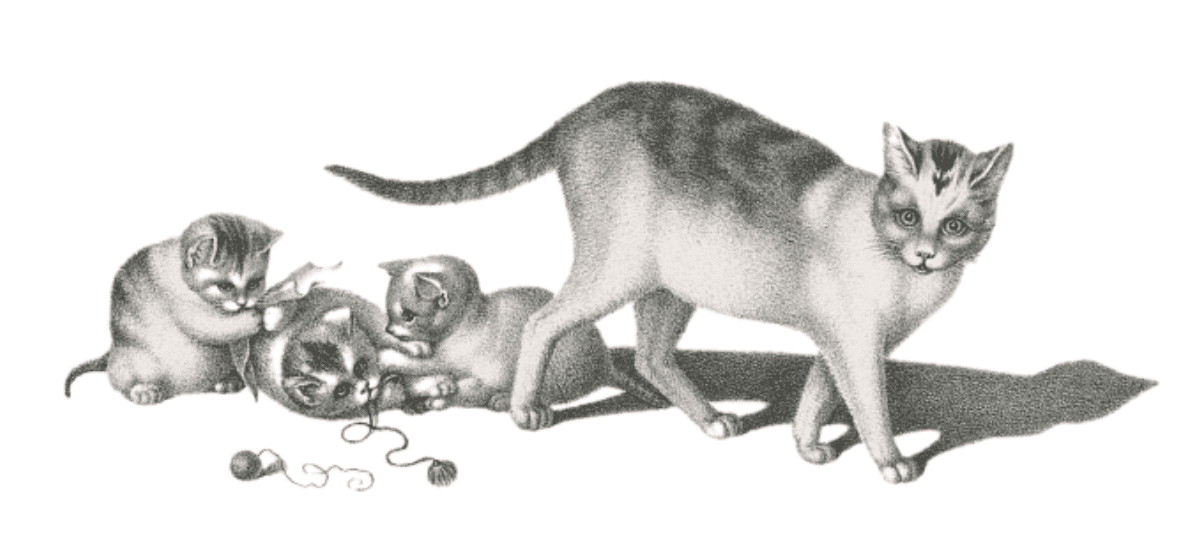
Mother cat playing with her kittens
In this drawing, a mother cat on a chair reaches down to play with her three kittens.

Mother cat sleeping with her three kittens

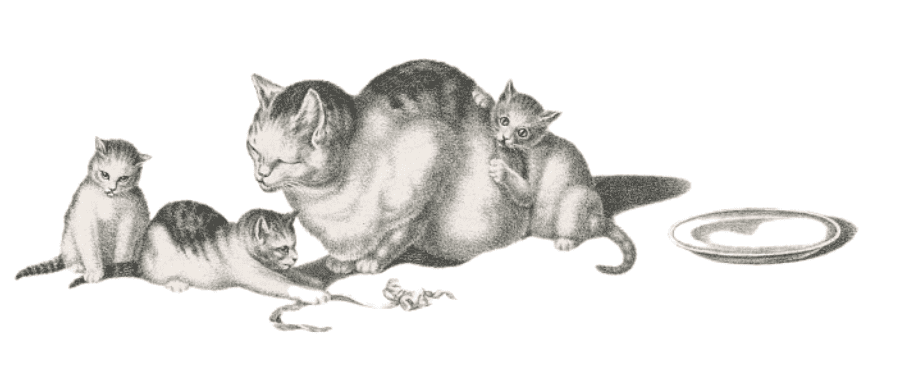
Mother cat and kittens catch mouse
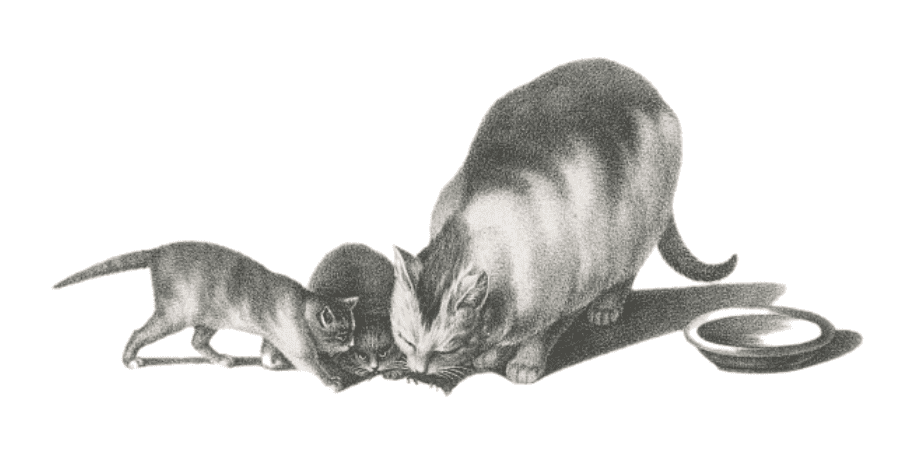
Mother cat and kitten share a saucer of milk
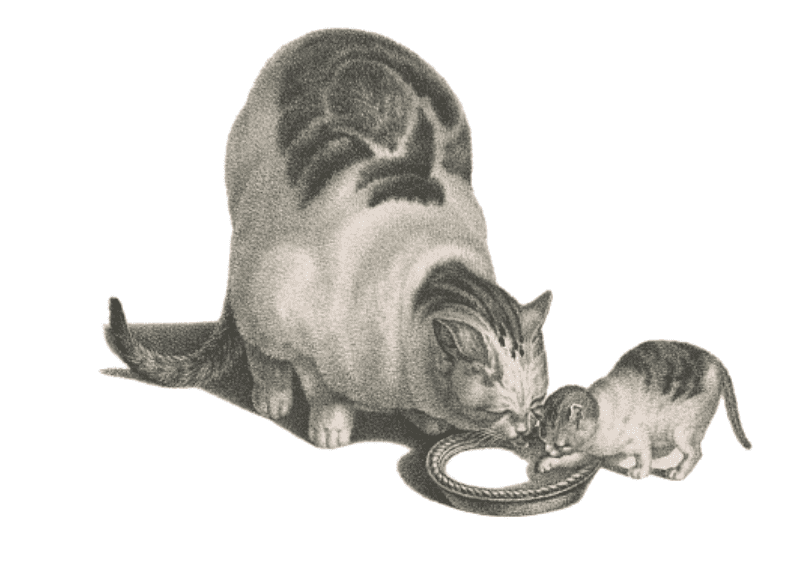
Mother cat eating while her two kittens play
A mother cat happily eats some sliced meat while her two kittens play behind her.

Two cats fighting
A tabby cat with white spotting on their face and female harlequin cat fight in this scene.
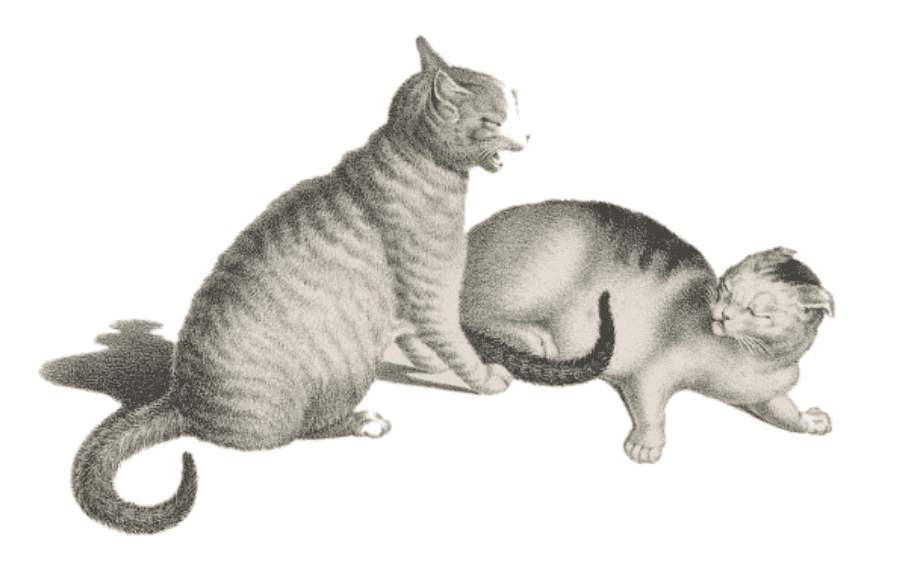
References
Champfleury. (1869). Les chats, histoire-moeurs-observations-anecdotes. France: Librairie de la Société Botanique de France.
Byerley, T & Timbs, John (27 September 1828). “Fine Arts: The Cat Raphael”. The Mirror of Literature, Amusement, and Instruction (333): 200–202.
Rolfe, G. B. (1895). The Cat in Law. The North American Review, 160(459), 251-254. https://www.jstor.org/stable/25103480
Ross, C. H. (1868). The book of cats: a chit-chat chronicle of feline facts and fancies, legendary, lyrical, medical, mirthful and miscellaneous. Griffith and Farran.
Spielmann, M. H. (1891). A Great Painter of Cats. The Magazine of Art, 21-27.
Time’s Telescope for … ; Or, A Complete Guide to the Almanack. (1820). United Kingdom: Sherwood, Gilbert and Piper.
Tredgold, A. F. (1914). Mental Deficiency (amentia). United Kingdom: Wood.






